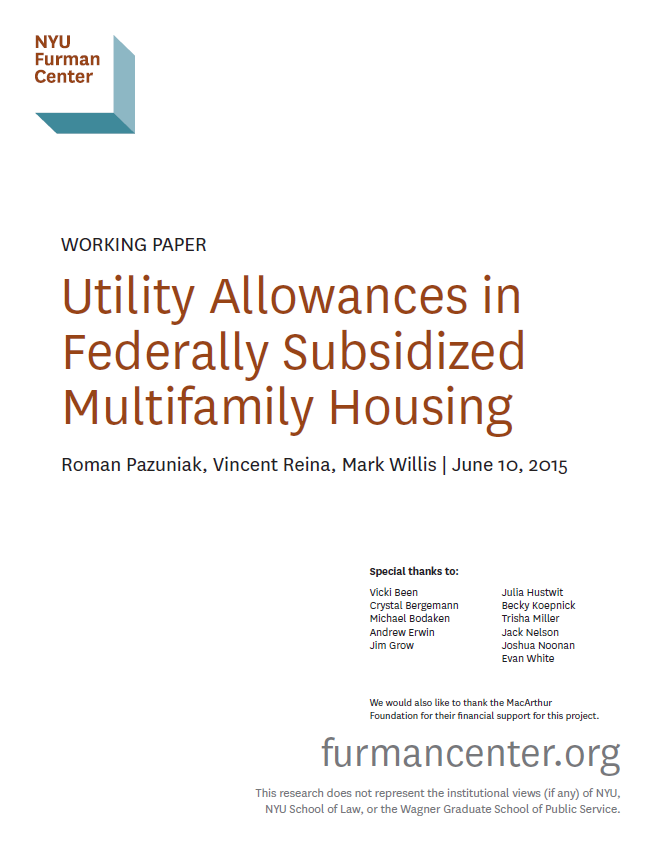
Utility Costs and Federally Subsidized Housing: Regulations and the Incentives They Create

A new NYU Furman Center working paper, Utility Allowances in Federally Subsidized Multifamily Housing (PDF), by Research Assistant Roman Pazuniak, Research Affiliate Vincent Reina, and Executive Director Mark Willis, provides an analysis of the statutes, regulations, and guidance that govern the treatment of utility costs in the four largest federal subsidized housing programs and the incentives these rules create for the consumption of utilities.
 Reducing energy use in the subsidized rental housing stock—which comprises nearly four percent of all housing units in the U.S—is crucial to the nation’s energy and environmental goals. Given the constrained government budgets for housing, energy savings could also help to expand the availability of affordable housing through federal programs. The paper provides recommendations for how these programs can be restructured to incentivize lower utility consumption.
Reducing energy use in the subsidized rental housing stock—which comprises nearly four percent of all housing units in the U.S—is crucial to the nation’s energy and environmental goals. Given the constrained government budgets for housing, energy savings could also help to expand the availability of affordable housing through federal programs. The paper provides recommendations for how these programs can be restructured to incentivize lower utility consumption.
In conjunction with the release of the paper, the NYU Furman Center hosted a webinar research presentation on June 17, 2014. The presentation explored utility consumption incentives in the four largest federal rental subsidy programs (Public Housing, Project-based Section 8, Housing Choice Vouchers, and the Low Income Housing Tax Credit) and identified existing levers to modify these incentives.
Working paper: Utility Allowances in Federally Subsidized Multifamily Housing (PDF)
Working paper: Low hanging fruit? Energy Efficiency and the Split Incentive in Subsidized Multifamily Housing (PDF)
Cityscape article: Household Energy Bills and Subsidized Housing
View a recording of the webinar, or download the webinar slidedeck.


